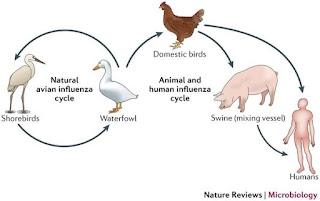With the partial lifting of the CoronaVirus lockdown in the UK, my house is now full of teenagers, dogs and, not to put too fine a word on it, mess! There are dog toys all over the conservatory courtesy of the 11 month old puppy, dog beds taken apart with blankets and cushions awry as my own dog attempts to hide her bone, and a muddy towel on the the floor by the garden door because it's been raining and they all know the rule of paws being wiped before they come in.
Then there are the teenagers. With iPhones attached to their hands like an animated extension, their music and chatter has banished the long silence of lockdown. Of course the bathroom is now far from pristine (although they do hang up their towels to dry), and I'm just ignoring their bedrooms until they go home again. There is more washing too. And more housework. But there are many compensations.
The long walks to the beach with all three dogs, the games in the garden, the different meals as they take over the kitchen and make bread, or a club sandwich, or risotto, or soup, are all welcome. They are both good and practising cooks too, so no longer having to provide every meal, as I did for their grandfather and me during lockdown, is a real bonus, even if their clearing up skills still need quite a bit of refinement!
And the conversations! With one a budding biologist who is also testing her political opinions, our discussions range from the interesting to the heated to the downright amusing, while the younger one concentrates on educating us about everything to do with horses and craft projects. We do learn a lot too because, thanks to their permanently available friend Google, they access facts and figures 24/7, and have the sort of conversations with us that their busy, hard-working parents rarely have time for. Hopefully they learn from us too. They seem to because, during lockdown, I had many phone calls from the biologist for advice on setting up a herb garden, while the arty/horsey one sent me regular updates on her painting projects. Today a tie-dye kit is arriving but it'll be staying in it's box until the rain stops as, lovely as it is to have family with us again, I do draw the line at tie-dying indoors!
Then there is the little one in Hong Kong, who should have been with us now but, thanks to CoronaVirus, cannot travel. It doesn't stop her joining us though...often, and loudly. She reads to us via Skype and we manage to play card games too. And now they are all on school vacation she doesn't just call us, she also calls her cousins, making it possible for all of them to maintain a relationship despite the distance.
In other words I prefer the mess, noise and busyness that comes with having young people around to the peace and quiet we enjoyed during lockdown. And eventually, Kerry in Double Fault was able to do that too. That's the good thing about happy endings!











































.jpg)


